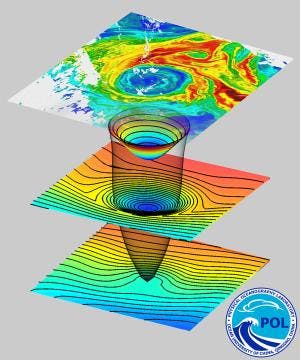Giant whirlpools or mesoscale eddies, as described in scientific literature, can grow between 100 km and 500 km in diameter, forming around islands where ocean currents become disrupted. These whirlpools carry immense amounts of water and heat, but up until now they’ve been largely ignored in climate models. A novel research, however, found that energy dispersed by the giant eddies shouldn’t be neglected, after measuring for the first time the extent of their effects.
The researchers from the University of Hawaii used satellite data collected between 1992 to 2010 to identify large eddies, then correlated their location with data pertaining to things like temperature, shape or volume retrieved from floating sensors. Interestingly enough, their findings suggest that the giant whirlpools move as much water around the world’s ocean as regular currents do, and because they’re forced in a westward motion by the spinning of the Earth, they’re delivering 30 million tonnes of sea water every second to the east coasts of the world’s continents.
“It’s not clear what this means for the weather, but it is likely to be significant,” says Slezak at New Scientist, calling mesoscale eddies the ocean equivalent of storms. “Some of the world’s biggest sources of climate variability, such as the El Niño Southern Oscillation, are powered by heat moving around the oceans, driven by wind and ocean currents.”
While it’s now certain that these eddies have a word to say when climate is concerned, it’s still unclear how significant their contribution is. Some of the world’s biggest sources of climate variability, such as the El Niño Southern Oscillation, are powered by heat moving around the oceans, driven by wind and ocean currents. It is possible, then, that the mesoscale eddies could power some of the world’s most powerful storms, considering the water they move is warmer than that discharged by currents.
A bigger, more important question that needs addressing is how does climate change effects eddies. It’s possible that a warmer world could make giant whirlpools bigger and more common. The findings appeared in the journal Science.










